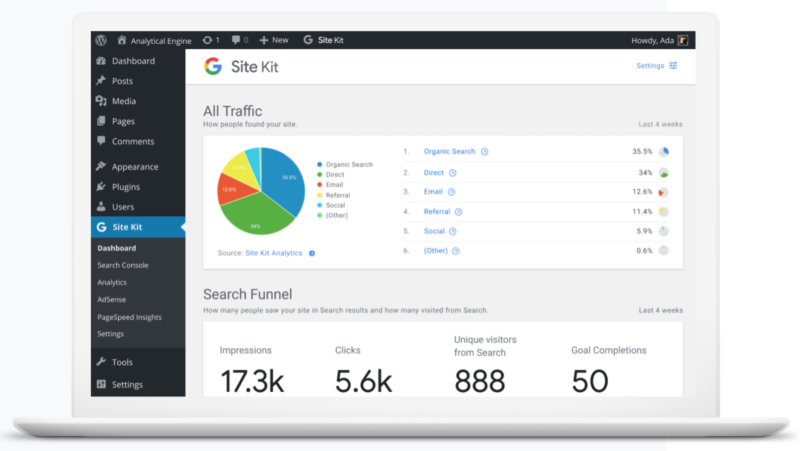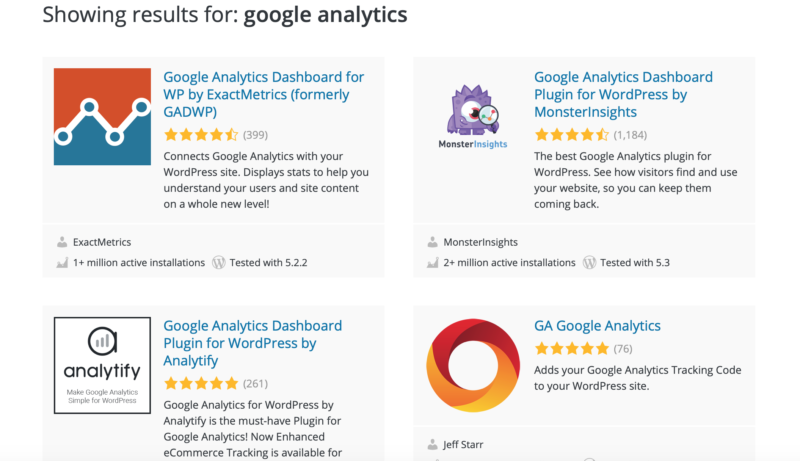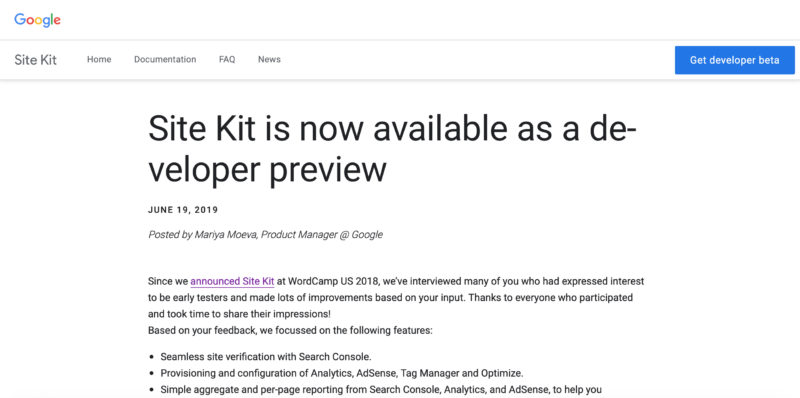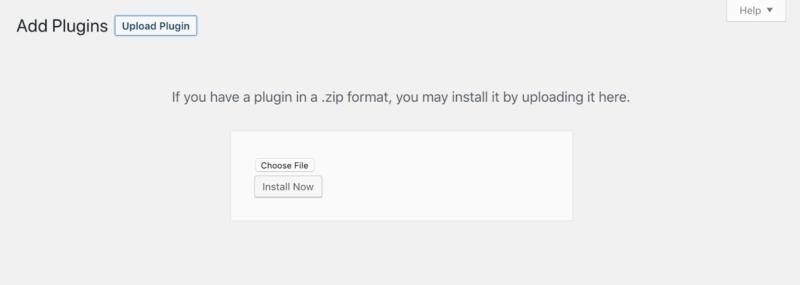- Sep 02, 2019
 0
0- by A2 Marketing Team
Engagement and profit may be the most important objectives you can have for your website. The former often leads to the latter, but finding ways to increase both can be a challenge.
SiteKit by Google is an exciting new solution for WordPress users, which can provide the information you need to reach your goals. It’s a plugin that combines various popular Google tools into a dashboard that helps you understand how well your site is doing in context.
In this article, we’ll introduce SiteKit and discuss its key features. Then we’ll offer some ways to use it on your website to increase engagement, and ultimately profit. Let’s get started!
An Introduction to SiteKit by Google

SiteKit by Google is a WordPress plugin that aggregates information from several existing Google tools, and displays them in your admin dashboard where they are most relevant. These tools include Search Console, Analytics, AdSense, and PageSpeed Insights.
Normally, you’d have to use each of these tools individually. With SiteKit, however, you’ll be able to collect data from each and see it all in one place. This gives you easy access to a wealth of information about your WordPress website, and can help you make sense of the important stats much more quickly.
For example, here are some of the features you’ll have access to:
- Seamless site verification with Search Console
- Simple per-page reporting from Analytics and AdSense
- Continuous site performance auditing and monitoring from PageSpeed Insights
Armed with this information, you should never run out of ideas for how to improve on your website. For example, you can use this data to tweak design elements, discover your most engaging content, and monitor traffic and conversions (just to name a few applications).
4 Ways SiteKit by Google Can Unlock More Engagement and Profit for Your Website
Since SiteKit gathers data from a variety of different tools, you get the specific benefits of each one plus the advantage of being able to easily combine their features. Here are four ways SiteKit can improve engagement on your site, and help you encourage conversions.
1. Analytics Are Right on Your Dashboard

If you’ve ever used Google Analytics before, you’ll know how useful the information it provides can be. However, before SiteKit was around, WordPress users had to log into a separate account to view their data, or install an integration plugin (most of which are very limited).
Now, with this plugin in place, your analytics are available right in your WordPress dashboard. This means you no longer have to leave your admin are to analyze your site’s performance.
In other words, you’ll be conveniently equipped to measure your site’s traffic levels and other key metrics. With this data in hand, you can determine what drives engagement on your website (and what doesn’t). From there, you can make changes to optimize your content and design, in order to better serve your goals.
2. You Can Easily Combine and Compare Various Stats

As we’ve mentioned, SiteKit provides a summary view of many of the most important stats about your website. This includes total views, average impressions, and average CTR for all of your posts.
The best part is that these details are pulled from a variety of places, and represent a kind of ‘birds-eye-view’ of your online presence. As you might imagine, this information can be rather useful. You’ll be able to quickly assess how well your website is performing, and react accordingly.
You’ll also be able to easily locate important metrics such as your Click Through Rates (CTRs). This is the percentage of views (of a certain piece of content) that result in clicks. In other words, it shows you how well your various posts and pages are enticing people to click on your Calls to Action (CTAs). If your CTR is low, you may want to reconsider the wording of your content, and specifically how you are employing keywords.
3. You’ll Be Able to View Stats for Each Individual Page

In addition to getting an overall look at your site’s metrics, you can also examine the analytics for individual pages via SiteKit. One click will show you the number of impressions, unique visitors, clicks, and average time spent on each piece of content.
The convenience this provides can help you save time as you review your data. Plus, when you see that something is not working, you’re already in the right place to jump right in and start fixing it.
For example, if you notice that one of your pages has a high bounce rate, you might consider improving or changing the content on that page. If it’s not essential, on the other hand, you could even remove it completely.
4. It Reduces Your Need for Third-Party Plugins

Another useful facet of SiteKit is that you will no longer need third-party plugins to connect your site to Google’s analytics tools. WordPress sites often use several different plugins to access and use the data they need.
Reducing the number of plugins your site relies on means less maintenance in the long run. In addition, it can improve your site’s performance, since having a lot of plugins can represent a significant burden that affects loading times.
Plus, since SiteKit is designed by Google, it will automatically receive updates to its analytics tools as soon as they become available. Other plugins may require you to wait for developers to push out updates after the fact, during which time your site may be more vulnerable.
How to Download the SiteKit by Google Beta and Get Started Right Now
In many ways, SiteKit by Google is a revolutionary solution. However, it is still under development. The good news is that, if you’d like to give it a try, you can do so easily. Google is giving WordPress users a chance to test-drive the plugin and offer feedback.
All you have to do is visit the SiteKit page and click on Get developer beta:

Since this plugin doesn’t have all the kinks worked out just yet, we recommend that you install it on a staging site. After the download is complete, you’ll need to log into your WordPress admin area. Go to Plugins > Add New, and select Upload Plugin:

Click on Choose File and select google-site-kit.zip, then go ahead and complete the installation and activation process. At this point, you’ll be taken back to your list of installed plugins. At the very top will be a new banner:

Click on Start Setup. You’ll be taken to the Google Developers, site where you’ll verify your credentials and your Google account information. After that, you’re ready to dive in and start experimenting.
Conclusion
SiteKit by Google is an all-in-one plugin for WordPress users, which is designed to provide all the data you need to optimize your website. Although it’s still in beta at the moment, this powerful new tool can offer valuable insight into your site’s performance.
SiteKit can unlock added engagement and profit for your website in the following ways:
- Analytics are right on your dashboard.
- You can easily combine and compare various stats.
- You’ll be able to view stats for each individual page.
- It reduces your need for third-party plugins.
Image credit: mohamed_hassan.












